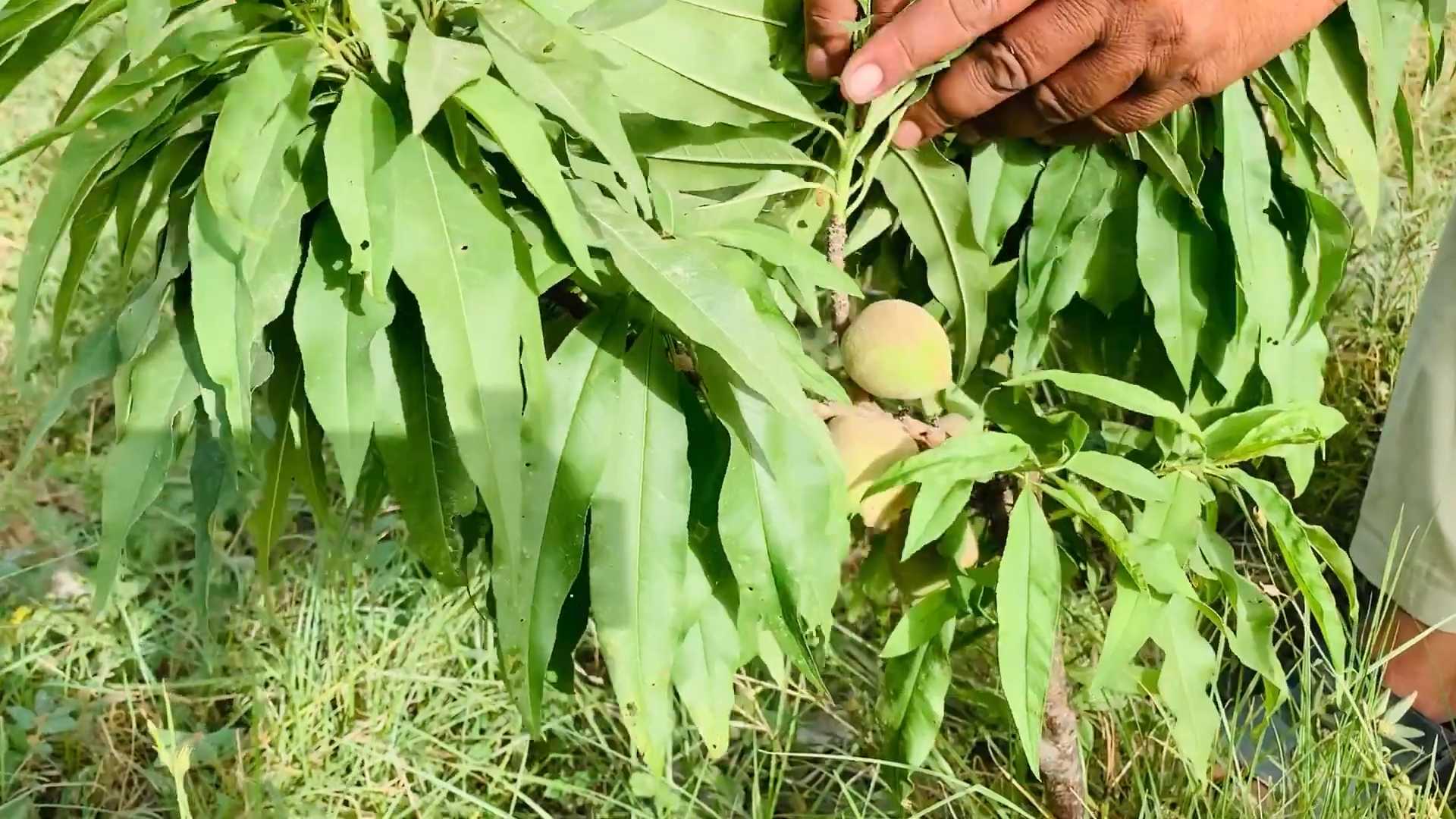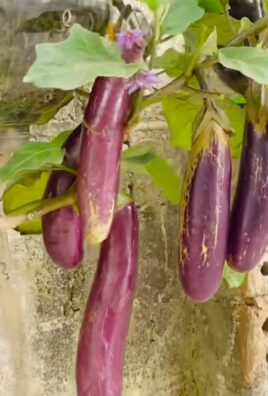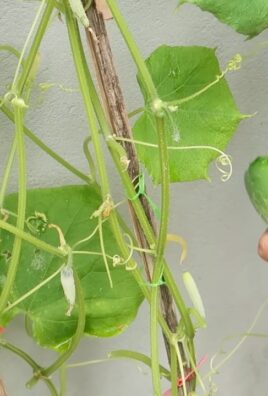Growing peaches at home might seem like a dream reserved for sprawling orchards, but I’m here to tell you that juicy, sun-ripened peaches can absolutely be a reality, even in your own backyard! Forget those bland, store-bought peaches that lack that authentic peachy flavor. Imagine biting into a peach you nurtured yourself, bursting with sweetness and the satisfaction of your own green thumb.
The history of peach cultivation is rich, dating back thousands of years to China, where they were symbols of immortality and longevity. From ancient emperors to modern-day gardeners, the allure of the peach has endured. But let’s be honest, many of us are intimidated by the thought of fruit trees. We picture complicated pruning techniques and battling pests, but I’m going to show you some simple, effective DIY tricks and hacks that will make growing peaches at home surprisingly easy and rewarding.
Why do you need these DIY tricks? Because everyone deserves the joy of fresh, homegrown fruit! Plus, these tips will save you money, reduce your reliance on commercially grown produce, and give you a deeper connection to nature. I’ll guide you through everything from choosing the right variety for your climate to protecting your precious peaches from pesky critters. Get ready to transform your backyard into a mini-orchard and enjoy the sweet taste of success!

Growing Peaches in Your Own Garden: A Step-by-Step Guide
Hello fellow gardeners! Have you ever imagined picking juicy, sun-ripened peaches straight from your own tree? I can tell you, it’s an incredibly satisfying feeling! And the best part: it’s not as hard as you might think. In this article, I’ll show you how to plant and care for your own peach trees so you can soon enjoy your own peach harvest.
Choosing the Right Variety
Before we get started, it’s important to choose the right peach variety for your climate and needs. Not all peach varieties are the same!
- Climate Zone: Find out your climate zone. Some peach varieties are more cold-hardy than others. Ask your local nursery which varieties thrive in your region.
- Ripening Time: Peaches ripen at different times of the year. If you want a long harvest season, choose varieties with different ripening times.
- Purpose: Do you want to eat the peaches fresh, can them, or freeze them? Some varieties are better suited for certain purposes than others.
- Disease Resistance: Look for varieties that are resistant to common peach diseases like leaf curl.
Some popular and relatively low-maintenance varieties include:
- ‘Redhaven’: A very popular variety with good flavor and good disease resistance.
- ‘Elberta’: A classic variety that is great for canning.
- ‘Honeydew’: A sweet and juicy variety that ripens early.
- ‘Frost’: A cold-hardy variety that is well-suited for colder regions.
The Right Location
The location is crucial for the success of your peach tree. Peaches love the sun!
- Sun: Choose a location that gets at least 6-8 hours of sun per day. The more sun, the better!
- Soil: The soil should be well-draining. Peach trees do not tolerate waterlogging. If your soil is heavy and clay-like, amend it with compost or other organic material.
- Wind Protection: A location that is protected from strong winds is ideal. Wind can damage the blossoms and interfere with pollination.
- Space: Peach trees need space to grow. Don’t plant them too close to buildings or other trees.
Planting the Peach Tree
Now let’s get down to it! Planting is an important step that lays the foundation for healthy growth.
- The Right Time: The best time to plant a peach tree is in the spring or fall, when the ground is not frozen and temperatures are mild.
- Prepare the Planting Hole: Dig a hole that is twice as wide and as deep as the tree’s root ball.
- Prepare the Tree: Carefully remove the tree from its pot and gently loosen the roots. If the roots are very dense, you can carefully score them with a knife or garden shears.
- Plant the Tree: Place the tree in the hole, making sure the graft union (the spot where the peach tree was grafted onto a rootstock) is about 5-10 cm (2-4 inches) above the ground.
- Fill the Hole: Fill the hole with soil and press it down lightly.
- Water: Water the tree thoroughly to settle the soil.
- Mulch: Apply a layer of mulch (e.g., bark mulch or straw) around the tree to retain moisture in the soil and suppress weeds. Make sure the mulch does not touch the trunk directly.
- Staking: If the tree is still young, it may be a good idea to support it with a stake to protect it from wind.
Caring for the Peach Tree
Care is crucial to ensure your peach tree grows healthily and bears plenty of fruit.
Watering
- Water regularly: Peach trees need regular water, especially during dry periods. Water deeply and infrequently, rather than often and shallowly.
- Check soil moisture: Check the soil moisture by sticking your finger into the soil. If the soil feels dry, it’s time to water.
Fertilizing
- Spring: Fertilize the tree in the spring with a balanced fertilizer (e.g., 10-10-10). Follow the instructions on the packaging.
- Organic Fertilizer: Alternatively, you can use organic fertilizer like compost or manure.
Pruning
Pruning is an important part of peach tree care. It promotes growth, fruit production, and the health of the tree.
- Winter Pruning: The best time to prune is in late winter or early spring, before the tree starts to bud.
- Goals of Pruning:
- Remove dead, diseased, or damaged branches.
- Thin out the canopy to improve air circulation and sunlight penetration.
- Encourage the formation of fruiting wood (one-year-old shoots).
- Shape the tree to maintain a good structure.
- Pruning Techniques:
- Remove branches that cross or rub against each other.
- Shorten long shoots to encourage branching.
- Remove watersprouts (shoots that grow vertically upwards).
- Remove suckers (shoots that grow from the roots).
- Caution: Don’t prune too much at once, as this can weaken the tree.
Diseases and Pests
Peach trees can be susceptible to various diseases and pests.
- Peach Leaf Curl: A fungal disease that affects the leaves. The leaves turn red, thicken, and become curled.
- Prevention: Spray the tree in late winter or early spring with a fungicide containing copper.
- Treatment: Remove affected leaves.
- Peach Twig Borer: A pest whose larvae burrow into the fruit.
- Prevention: Install pheromone traps to attract and catch the males.
- Treatment: Spray the tree with an insecticide approved for use on fruit trees.
- Aphids: Small insects that feed on plant sap.
- Treatment: Spray the tree with an insecticide or use a soap solution.
- Brown Rot (Monilinia): A fungal disease that affects flowers and shoots.
- Prevention: Remove affected flowers and shoots. Ensure good air circulation.
- Treatment: Spray the tree with a fungicide.
Regular Inspection: Check your tree regularly for signs of disease or pests. The earlier you detect a problem, the easier it is to treat.
Harvest Time
Finally! The moment you’ve been waiting for!
Pick Gently: Pick the peaches carefully to avoid damaging them.
Signs of Ripeness: Peaches are ripe when they are easy to pick from the tree and have a pleasant fragrance. The color of the fruit should also have changed.

Conclusion
So, there you have it! Growing peaches at home, while requiring patience and dedication, is an incredibly rewarding experience that brings the taste of summer right to your backyard. This DIY approach, focusing on careful variety selection, diligent pruning, and proactive pest control, empowers you to cultivate delicious, juicy peaches that surpass anything you can find in a grocery store. Forget the bland, mass-produced fruit – imagine biting into a sun-ripened peach, bursting with flavor, knowing you nurtured it from blossom to harvest.
This isn’t just about saving money; it’s about connecting with nature, understanding the growing process, and enjoying the unparalleled satisfaction of harvesting your own food. Plus, homegrown peaches are often far more nutritious, as they’re allowed to ripen fully on the tree, maximizing their vitamin and mineral content.
Don’t be afraid to experiment! Consider different peach varieties suited to your specific climate. For warmer regions, try ‘Florida Prince’ or ‘TropicBeauty’. In cooler areas, ‘Reliance’ or ‘Redhaven’ are excellent choices. You can also explore espalier techniques to train your peach tree against a wall, maximizing sunlight exposure and saving space. Another variation is to try growing dwarf peach trees in containers, perfect for patios or balconies. Just ensure you choose a large enough pot and provide adequate drainage.
Remember, success in growing peaches at home hinges on consistent care and attention. Regular watering, fertilization, and pest monitoring are crucial. Don’t be discouraged by initial setbacks; learning from your mistakes is part of the process. The rewards – the fragrant blossoms in spring, the anticipation of the harvest, and the unforgettable taste of homegrown peaches – are well worth the effort.
We strongly encourage you to give this DIY peach-growing method a try. It’s a journey of discovery, a chance to connect with nature, and a pathway to enjoying the freshest, most flavorful fruit imaginable. Once you’ve tasted a homegrown peach, you’ll never look at store-bought peaches the same way again.
And most importantly, we want to hear about your experiences! Share your successes, your challenges, and your tips in the comments below. Let’s create a community of home peach growers, supporting each other and learning together. Post pictures of your trees, your harvests, and your delicious peach creations. Together, we can unlock the secrets to growing the perfect peach at home. Let us know what variety you chose, what challenges you faced, and what you learned along the way. Your insights could be invaluable to other aspiring peach growers. So, grab your gardening gloves, choose your peach variety, and embark on this exciting adventure. Happy growing!
Frequently Asked Questions (FAQ)
What is the best time of year to plant a peach tree?
The ideal time to plant a peach tree is in early spring or late fall, when the tree is dormant. This allows the roots to establish themselves before the stresses of summer heat or winter cold set in. Planting in the spring gives the tree the entire growing season to acclimate to its new environment. Fall planting allows the roots to grow during the cooler months, giving the tree a head start in the spring. Avoid planting during the heat of summer or when the ground is frozen.
How much sunlight does a peach tree need?
Peach trees require at least 6-8 hours of direct sunlight per day to thrive and produce a good crop of fruit. Choose a planting location that receives full sun throughout the day. Insufficient sunlight can lead to weak growth, poor fruit production, and increased susceptibility to diseases. Observe the area throughout the day to ensure it receives adequate sunlight, especially during the critical growing season.
What kind of soil is best for peach trees?
Peach trees prefer well-drained, loamy soil with a slightly acidic pH (between 6.0 and 6.5). Good drainage is essential to prevent root rot. If your soil is heavy clay, amend it with organic matter such as compost or well-rotted manure to improve drainage and aeration. Sandy soil can be amended with organic matter to improve water retention. A soil test can help determine the pH and nutrient levels of your soil, allowing you to make necessary amendments before planting.
How often should I water my peach tree?
Water newly planted peach trees deeply and regularly, especially during the first year. Water established trees deeply once or twice a week during dry periods. Avoid overwatering, as this can lead to root rot. The frequency of watering will depend on the climate, soil type, and age of the tree. Check the soil moisture regularly by sticking your finger a few inches into the soil. If the soil feels dry, it’s time to water.
When and how should I prune my peach tree?
Pruning is essential for maintaining the health and productivity of peach trees. Prune in late winter or early spring, before the tree begins to grow. Remove any dead, damaged, or diseased branches. Thin out crowded branches to improve air circulation and sunlight penetration. Peach trees bear fruit on one-year-old wood, so avoid pruning too heavily. The goal is to create an open, vase-shaped structure that allows sunlight to reach all parts of the tree.
What are common pests and diseases that affect peach trees, and how can I control them?
Peach trees are susceptible to various pests and diseases, including peach leaf curl, brown rot, aphids, and peach tree borers. Regularly inspect your tree for signs of pests or diseases. Use organic pest control methods whenever possible, such as insecticidal soap or horticultural oil. For diseases like peach leaf curl, apply a copper fungicide in the fall and early spring. Preventative measures, such as proper pruning and good sanitation, can also help reduce the risk of pest and disease problems.
How long does it take for a peach tree to produce fruit?
Peach trees typically begin to produce fruit within 2-4 years after planting, depending on the variety and growing conditions. Dwarf varieties may produce fruit sooner. Proper care, including adequate sunlight, water, and fertilization, can help accelerate fruit production. Be patient and continue to provide the necessary care, and you’ll be rewarded with delicious peaches in due time.
How do I know when my peaches are ripe?
Peaches are ripe when they have a deep, rich color and a slightly soft feel. The fruit should easily detach from the branch with a gentle twist. The aroma of ripe peaches is also a good indicator of ripeness. Avoid picking peaches that are still hard or green, as they will not ripen properly off the tree. Taste-testing is the best way to ensure that your peaches are perfectly ripe and ready to enjoy.
Can I grow a peach tree from a peach pit?
While it is possible to grow a peach tree from a peach pit, it is not recommended. Peach trees grown from pits may not produce fruit that is true to the parent variety. The resulting tree may also be more susceptible to diseases and pests. Grafting or budding a known peach variety onto a rootstock is the preferred method for propagating peach trees. This ensures that you will get a tree that produces the desired fruit and is resistant to common problems.
What fertilizer should I use for my peach tree?
Use a balanced fertilizer specifically formulated for fruit trees. Apply fertilizer in early spring, before the tree begins to grow. Follow the instructions on the fertilizer package for the correct amount to use. Avoid over-fertilizing, as this can lead to excessive vegetative growth and reduced fruit production. A soil test can help determine the specific nutrient needs of your tree.




Leave a Comment